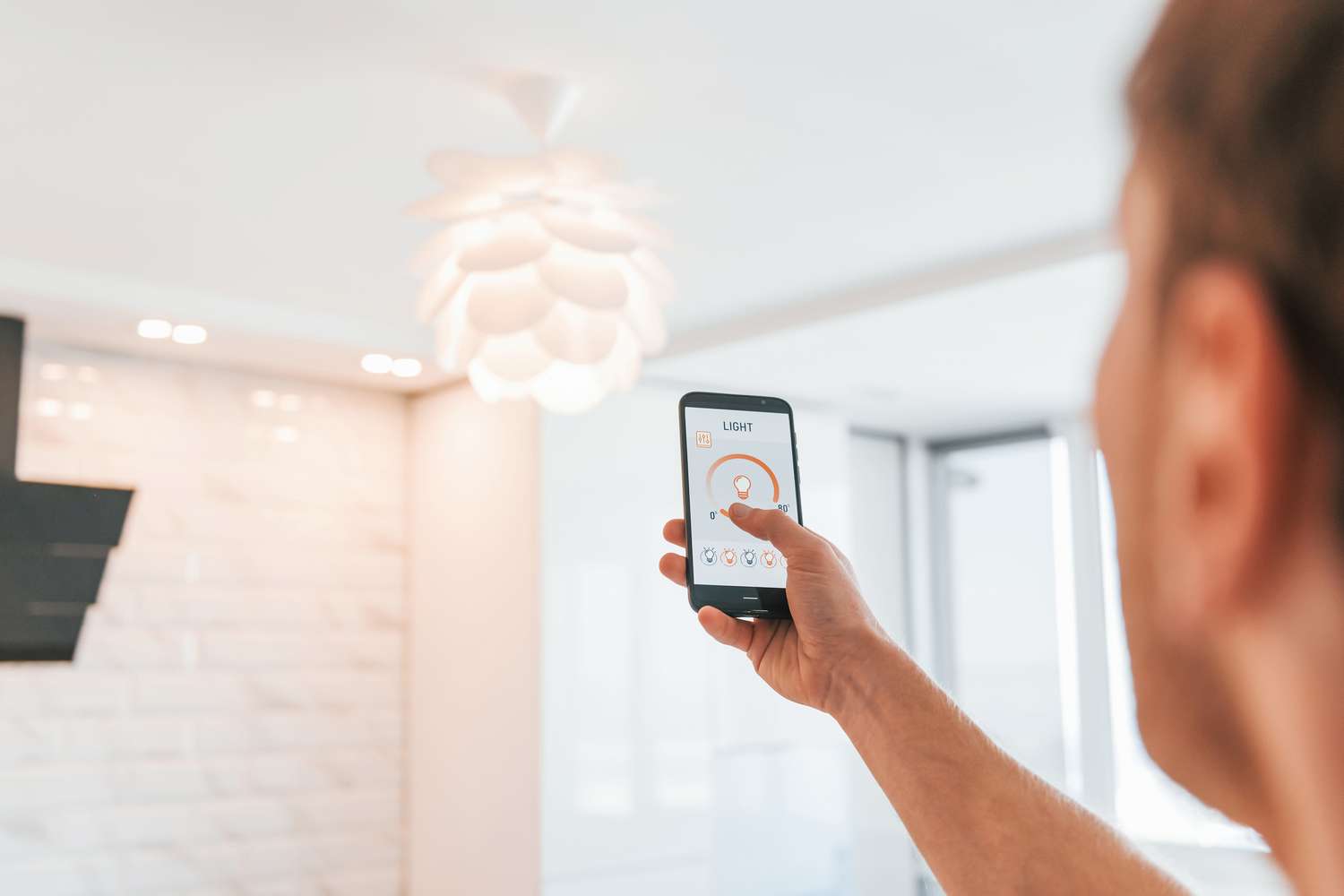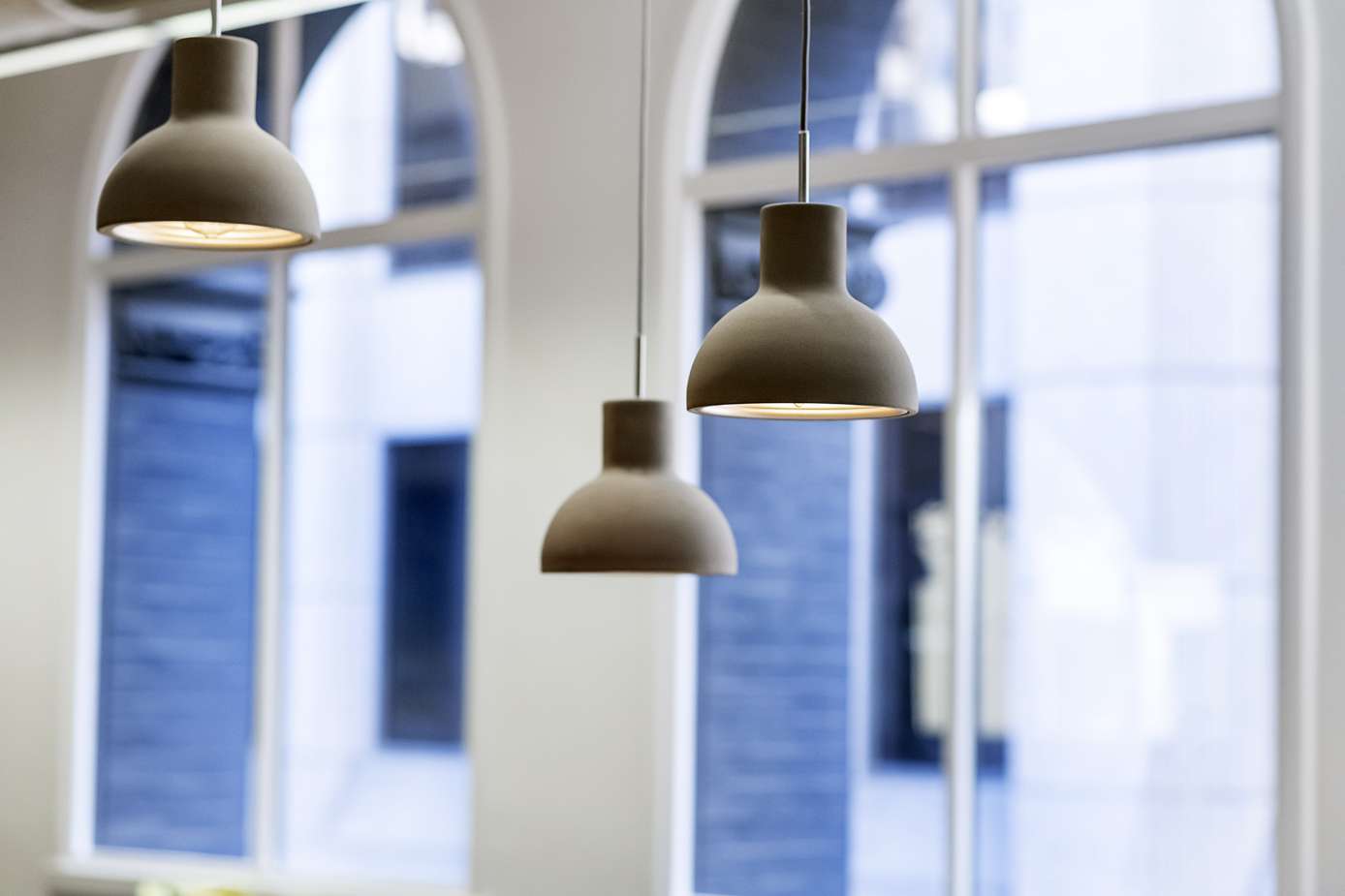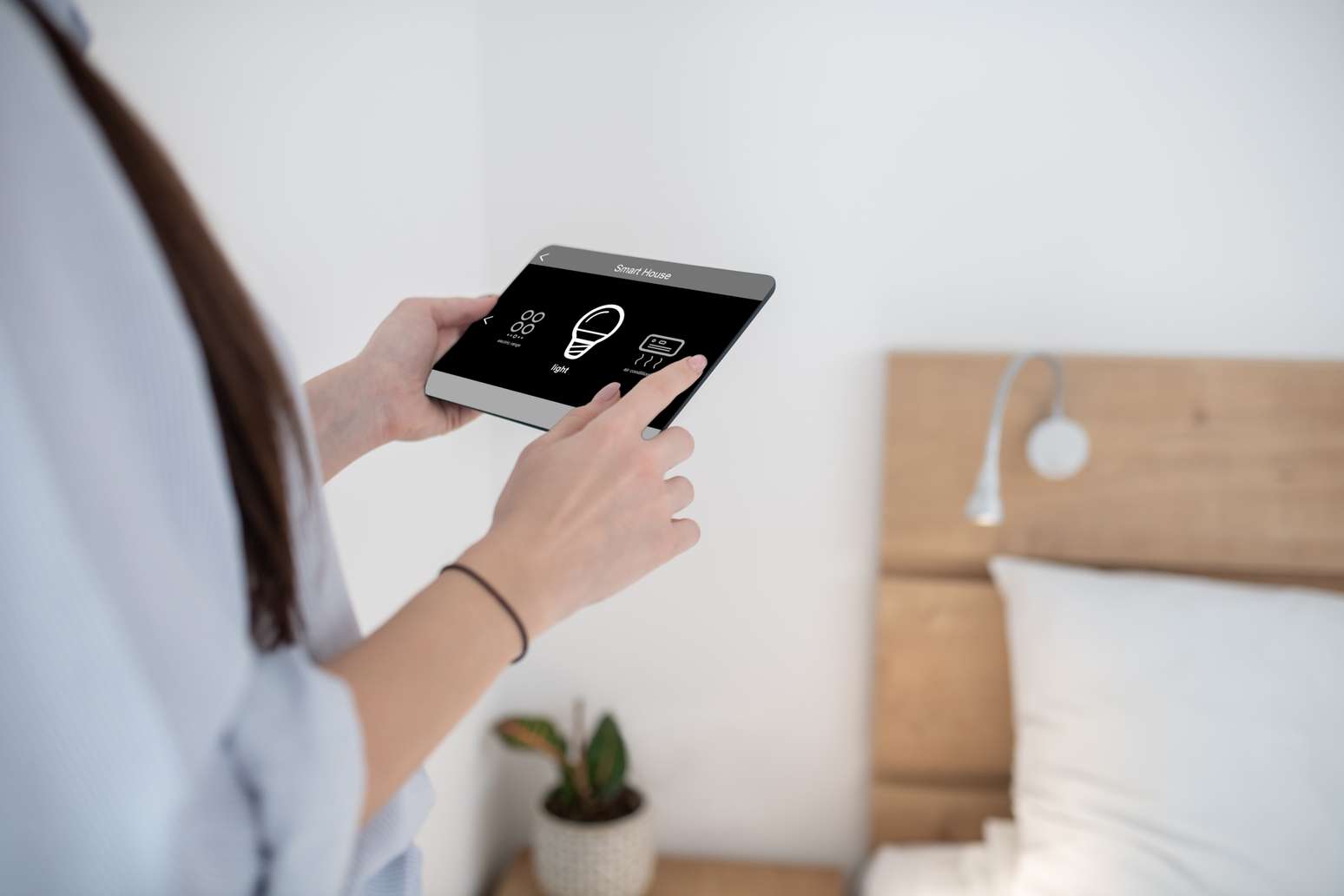Far more than just a bright idea, smart lighting systems offer a multitude of benefits that extend beyond illumination. They empower homeowners and businesses alike to transform the way they light their spaces, all while keeping a watchful eye on their wallets. Smart lighting can help you save money on your energy bills and reduce lighting-related expenses through various energy-efficient features and automation capabilities. So, how to save money with smart lighting systems? Here’s how:
- Switch to LED Bulbs
- Scheduling
- Geofencing
- Set Brightness Levels
- Upgrade Fixtures
- Use Daylight Sensors
- Energy Monitoring
Switch to LED Bulbs

The fundamental reason LED bulbs are such a cost-saving choice lies in their exceptional energy efficiency. These bulbs are designed to convert a significant portion of the electrical energy they consume directly into the light, with minimal energy loss in the form of heat. In contrast, traditional incandescent bulbs generate a substantial amount of heat while producing light, which is essentially wasted energy. This means that LED bulbs require considerably less electricity to produce the same amount of illumination, resulting in lower energy bills for you.
Longer Lifespan
LED bulbs boast an impressive lifespan compared to their incandescent counterparts. On average, LED bulbs can last tens of thousands of hours, significantly outperforming incandescents, which may only last for a few thousand hours. This longevity translates to reduced maintenance and replacement costs over time. While LED bulbs may have a higher upfront cost, the fact that they need replacement far less frequently means you’ll spend less money on buying new bulbs and the labor associated with replacing them.
Dimmability and Control
Many LED bulbs are dimmable, allowing you to adjust the brightness to your liking. This flexibility has several benefits for energy savings. First, you can lower the brightness in areas where full illumination isn’t necessary, such as during movie nights or when creating ambient lighting. Second, when integrated into a smart lighting system, you can remotely control and automate the dimming of LED bulbs based on your preferences and daily routines. This level of control empowers you to use only the amount of light you need, further reducing energy consumption.
Smart Integration
The synergy between LED bulbs and smart lighting systems amplifies their cost-saving potential. LED bulbs are compatible with most smart home ecosystems, making it easy to incorporate them into your existing setup. Through a smartphone app or voice commands to devices like Amazon Alexa or Google Assistant, you can control the brightness, color temperature, and scheduling of your LED bulbs. This enables you to optimize your lighting to match your activities, whether it’s reading, working, or relaxing, and to ensure lights are off when not needed, even when you’re away from home.
Environmental and Long-Term Savings
Beyond the immediate cost savings, LED bulbs are environmentally friendly. They contain no hazardous materials and are 100% recyclable. By reducing your energy consumption, you’re also decreasing your carbon footprint, contributing to a more sustainable future, and potentially aligning with energy efficiency incentives and rebates offered by governments and utility companies. Over the long term, the cumulative energy savings and reduced maintenance costs associated with LED bulbs can lead to substantial financial benefits.
Scheduling

Scheduling is a smart lighting feature that allows you to set specific times for your lights to turn on, off, or change their brightness. This level of automation ensures that your lights are only active when needed. For example, you can schedule your lights to turn off automatically during daytime hours when natural daylight is sufficient for illumination. By eliminating unnecessary usage, you’re conserving energy and reducing electricity consumption, which directly translates into cost savings on your energy bills.
One of the most significant advantages of scheduling is its ability to counteract human forgetfulness. It’s easy to leave lights on when you leave a room or to forget to turn them off before leaving home. With scheduling, you can program your lights to turn off automatically after a set period of inactivity or at specific times when you typically leave. This automation ensures that lights are never left on unintentionally, preventing unnecessary energy waste and reducing costs.
Every household or workplace has its unique lighting needs based on daily routines and activities. Scheduling enables you to align your lighting with these patterns. For instance, you can program lights to gradually brighten in the morning to wake you up gently and then dim in the evening to signal it’s time to wind down. Lights in common areas can automatically turn off during bedtime hours, and outdoor lighting can come on as the sun sets. This tailored approach ensures that lights are in sync with your lifestyle, conserving energy during idle periods. While you’re away on vacation or at work, you can program your smart lights to turn on and off at different times, simulating the presence of occupants. This can deter potential intruders who may be monitoring the property. The cost savings here extend beyond energy conservation; they encompass potential savings on security measures and the peace of mind that comes with a safer home.
Many smart lighting systems can integrate with other smart home devices, such as motion sensors and door/window sensors. By incorporating these sensors into your scheduling routines, you can ensure that lights are activated only when needed, such as when motion is detected or a door is opened. This level of precision further reduces energy waste and maximizes cost savings. Scheduling doesn’t just save you money on energy bills; it also extends the life of your smart bulbs and fixtures. By minimizing the hours of operation, you’re reducing the wear and tear on these devices, leading to fewer replacements and maintenance costs over time.
Geofencing

Geofencing is a smart lighting feature that can save you money in various ways by harnessing the power of location-based automation. Here’s a deeper explanation:
Automated Control Based on Your Location
Geofencing relies on your smartphone’s GPS to determine your location. By setting up virtual boundaries around your home or specific areas, you can instruct your smart lighting system to react when you enter or leave these zones. For example, as you approach your home, geofencing can trigger your lights to turn on automatically. Conversely, when you leave and move beyond the designated boundary, the lights can turn off without manual intervention.
Energy Savings When You’re Away
One of the primary ways geofencing can save you money is by ensuring that lights are not left on unnecessarily when you’re not at home. When you depart your home’s geofenced area, the system can initiate an “Away” mode, which automatically turns off lights throughout the house. This eliminates the risk of accidentally leaving lights on and wasting energy when no one is present, leading to reduced electricity consumption and lower utility bills.
Seamless Integration with Daily Routines
Geofencing seamlessly integrates with your daily routines. For instance, if you typically leave for work at a specific time in the morning, the lights can automatically adjust according to your schedule. This eliminates the need to manually turn off lights or set up timers, ensuring that energy is conserved as you go about your day.
Return Home to a Well-Lit Environment
Upon returning home, geofencing can be programmed to welcome you with well-lit surroundings. As you approach your home’s geofenced perimeter, the lights can gradually brighten or turn on, ensuring that you enter a well-illuminated and safe environment. This not only enhances security but also prevents the need to keep lights on during your absence, saving energy in the process.
Customized Geofencing Zones
You have the flexibility to define multiple geofencing zones based on your specific needs. For instance, you can create smaller zones for individual rooms or areas within your home. This allows for more granular control and energy conservation. For example, you can set up a geofence around your bedroom to ensure lights turn off automatically when you leave that space.
Avoidance of Manual Adjustments
Geofencing reduces the need for manual adjustments and constant monitoring of your lighting system. It simplifies the process of managing your lights, ensuring they respond intelligently to your presence without requiring your direct intervention. This convenience encourages energy-efficient habits and minimizes the chances of lights being left on unintentionally.
Set Brightness Levels

Setting brightness levels with smart lighting allows you to fine-tune your energy usage according to your specific needs. When you adjust the brightness to match the task or activity at hand, you avoid using excess energy. For example, when you lower the brightness of your lights during moments of relaxation or in areas with ample natural daylight, you’re essentially using only the energy required to provide the desired level of illumination. This practice directly translates into cost savings by reducing your overall electricity consumption.
Reduced energy consumption leads to lower electricity bills. When you consistently set appropriate brightness levels for your smart bulbs, you’re effectively lowering the power demand of your lighting system. With the majority of smart bulbs being LED, which are highly energy-efficient, the cost savings can be particularly significant. Over time, these lower energy bills can accumulate into substantial savings, making it a cost-effective choice for your household or business.
Bulbs operated at full brightness generate more heat and experience greater wear and tear on their components. By reducing the brightness to match your needs, you’re minimizing these stress factors, resulting in longer-lasting bulbs. Fewer replacements and reduced maintenance costs over time translate into additional financial savings.
Smart lighting systems enable you to tailor your lighting environment to match your activities and preferences. When you set brightness levels that suit your requirements, you’re effectively eliminating unnecessary lighting, which can consume additional electricity without providing any real benefit. This customized approach ensures that you’re using your lighting system efficiently, using only the amount of light necessary for each situation, and thus saving money by avoiding wasteful energy consumption.
The ability to set brightness levels is seamlessly integrated into smart lighting control systems. Whether you’re using a smartphone app or voice commands via devices like Amazon Alexa or Google Assistant, adjusting the brightness is straightforward and convenient. The precise control offered by smart lighting allows you to dim or brighten lights with ease. Additionally, you can establish automation routines that dynamically adjust brightness based on specific triggers, such as the time of day or motion detection. This level of control and automation not only enhances your comfort but also contributes to cost-effective lighting practices.
Upgrade Fixtures

Upgrading fixtures to smart lighting solutions instead of replacing the entire fixture can be a cost-effective approach for several reasons:
Cost Savings
Retrofitting existing fixtures with smart lighting components is often more affordable than purchasing entirely new fixtures. The cost of new fixtures includes not only the lighting components but also the structural and electrical work required for installation. By retaining your existing fixtures and adding smart lighting technology, you can enjoy the benefits of smart lighting without the higher upfront costs.
Ease of Installation
Upgrading fixtures to smart lighting solutions is typically less labor-intensive and disruptive compared to replacing entire fixtures. You won’t need to deal with the removal of old fixtures, rewiring, or any structural modifications. This can result in significant savings on installation costs and reduced downtime during the upgrade process.
Preservation of Aesthetics
Many fixtures are chosen for their design and aesthetics, which complement the overall look and feel of a space. Replacing these fixtures with new ones might alter the aesthetics or require costly adjustments to maintain the same design. Upgrading allows you to preserve the existing fixture’s appearance while adding smart capabilities.
Incremental Upgrades
Upgrading fixtures to smart lighting solutions allows you to take an incremental approach to smart home or office technology adoption. You can start with a few key fixtures and gradually expand the smart lighting system as needed, which can be more budget-friendly in the long run.
Use Daylight Sensors

Daylight sensors are instrumental in optimizing energy consumption by making sure artificial lighting is only used when necessary. These sensors measure the natural light available in a space and adjust the brightness of your smart lights accordingly. When ample daylight is present, the sensors dim or turn off the artificial lights. This directly translates into lower electricity consumption and, subsequently, reduced energy bills. By avoiding the unnecessary use of artificial lighting during daylight hours, you’re saving money on energy costs.
Daylight sensors ensure that your lighting system operates efficiently by coordinating natural and artificial light sources. They prevent over-illumination by adjusting the brightness of artificial lights in response to changes in natural light levels. This coordination optimizes energy usage, helping you avoid unnecessary costs associated with excessive energy consumption.
Another way daylight sensors save you money is by allowing you to customize your lighting levels for different times of the day. You can program your smart lighting system to be brighter in the early morning and evening when daylight is limited and dimmer during the middle of the day when natural light is abundant. This customization ensures that you’re using artificial light judiciously, only when required, which translates into cost savings.
Energy Monitoring

Energy monitoring systems provide you with detailed insights into your electricity usage. When integrated with smart lighting, these systems offer real-time data on how much energy your lighting consumes. This data empowers you to make informed decisions about your lighting habits and identify areas where energy savings can be realized. By understanding which lights are the most energy-intensive and when they’re most frequently used, you can take targeted actions to reduce energy waste.
Energy monitoring allows you to identify energy-hungry lighting fixtures or areas. You can pinpoint which lights contribute the most to your electricity bills and assess whether they are necessary at their current usage levels. This insight enables you to make strategic adjustments, such as replacing inefficient bulbs or fixtures with energy-efficient alternatives or reevaluating the necessity of certain lights in specific areas.
By analyzing energy consumption data, you can optimize lighting schedules and brightness levels. You may discover that certain lights are left on longer than needed or that they are too bright for the task at hand. With this knowledge, you can adjust schedules and brightness settings to minimize energy usage during non-peak hours and reduce costs without compromising on lighting quality.
Many energy monitoring systems allow you to set usage alerts and notifications. You can establish thresholds for energy consumption and receive alerts when lights exceed these limits. This feature helps you proactively address energy waste and take corrective actions, such as turning off lights remotely or implementing stricter usage policies.
Energy monitoring provides valuable data for budget planning and cost allocation. By understanding your lighting-related expenses, you can allocate funds more efficiently for lighting maintenance, upgrades, or replacements. This helps you avoid unexpected costs and ensures that you have a clear financial strategy for managing your lighting infrastructure.
Energy monitoring systems enable you to track the impact of energy-saving measures over time. By comparing historical data before and after implementing energy-efficient lighting practices, you can quantify the actual cost savings achieved. This data-driven approach not only validates your efforts but also helps you identify further opportunities for improvement.

In conclusion, the journey to saving money with smart lighting is illuminated with opportunities for both immediate and long-term financial benefits. Whether you’re switching to energy-efficient LED bulbs, embracing the convenience of automation, or integrating smart features like geofencing, scheduling, or daylight sensors, each step contributes to reduced energy consumption and lower utility bills. By optimizing your lighting use, you not only watch your immediate costs shrink but also invest in a brighter and more sustainable financial future. So, as you embark on your path towards cost-effective illumination, remember that every watt saved is a dollar earned, and every smart choice shines a light on a brighter, more efficient, and financially savvy way forward. Start now!
